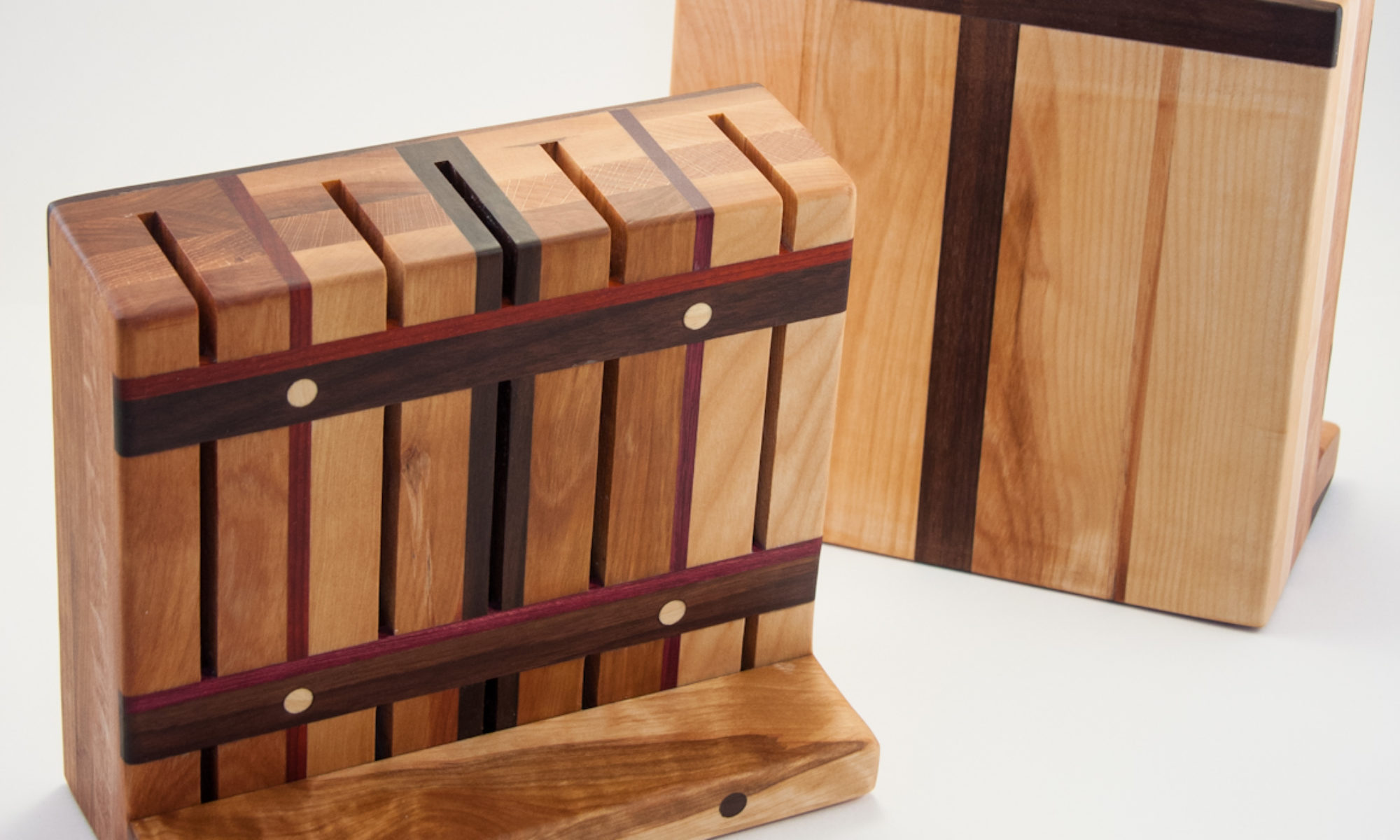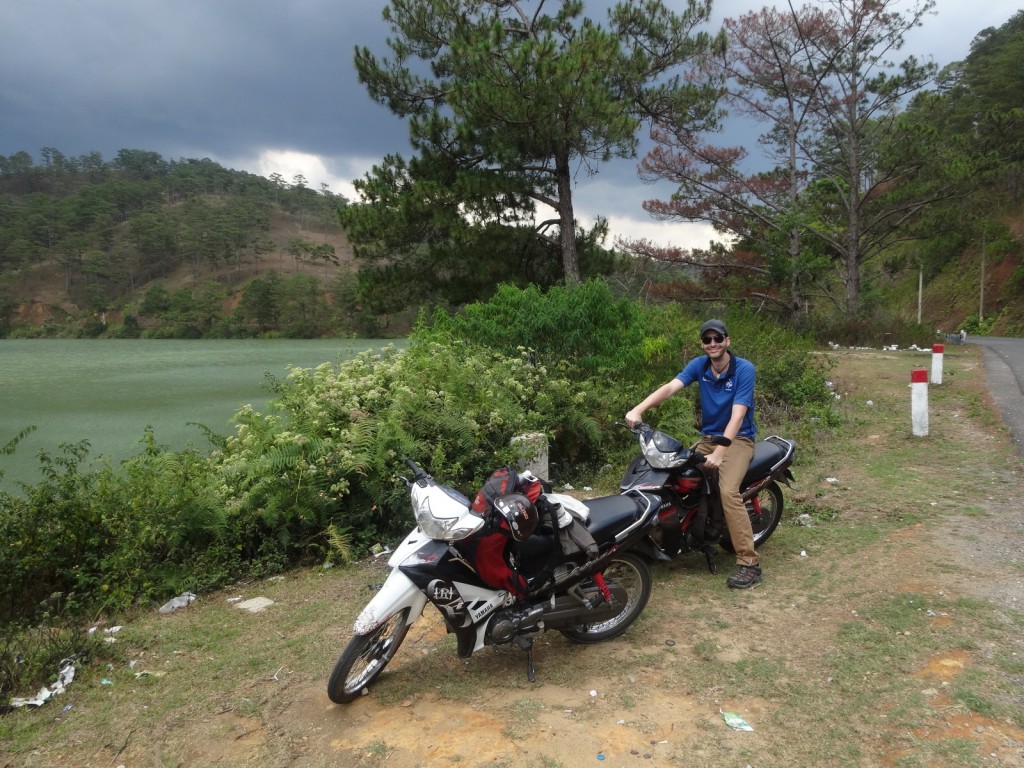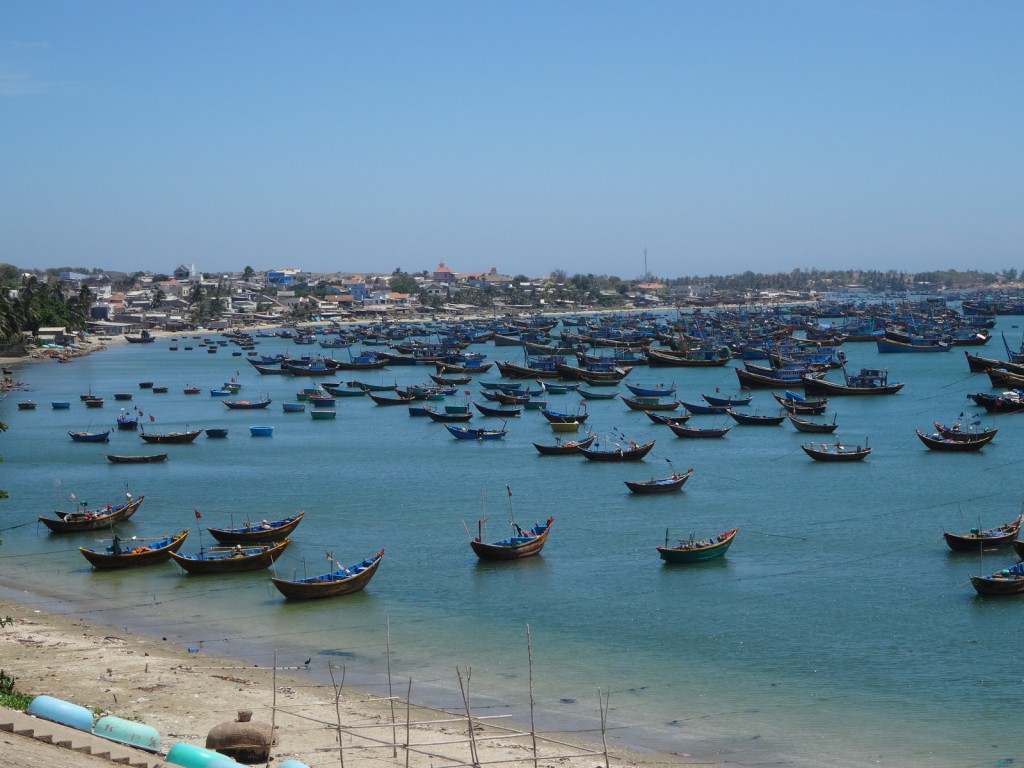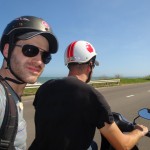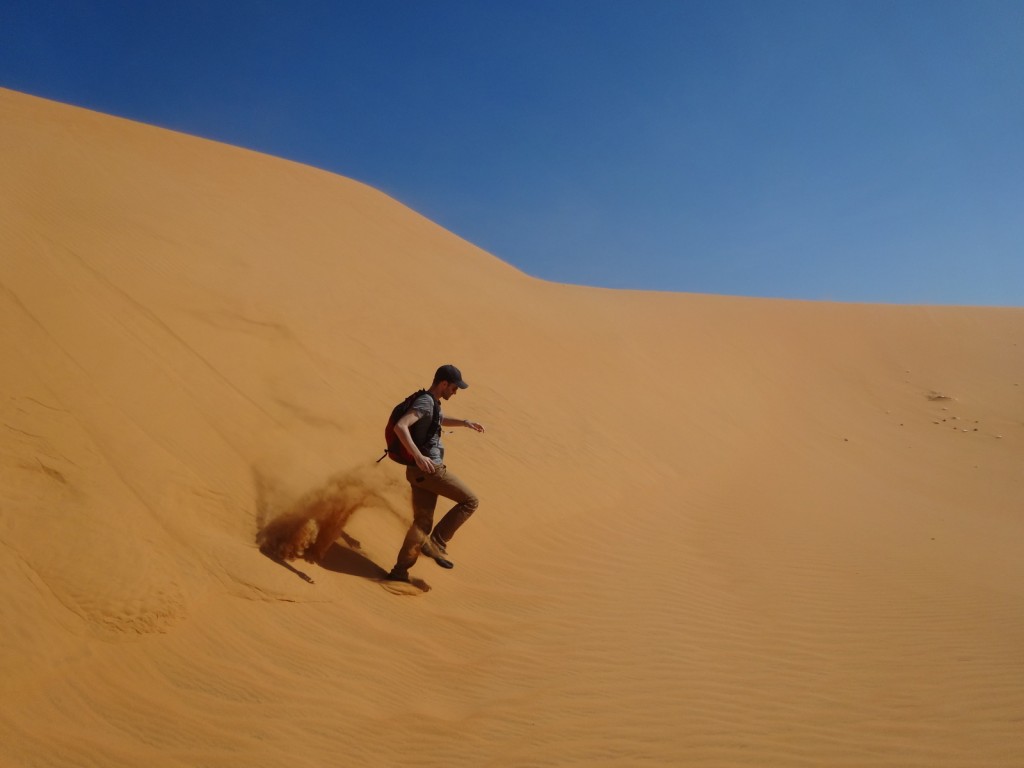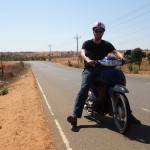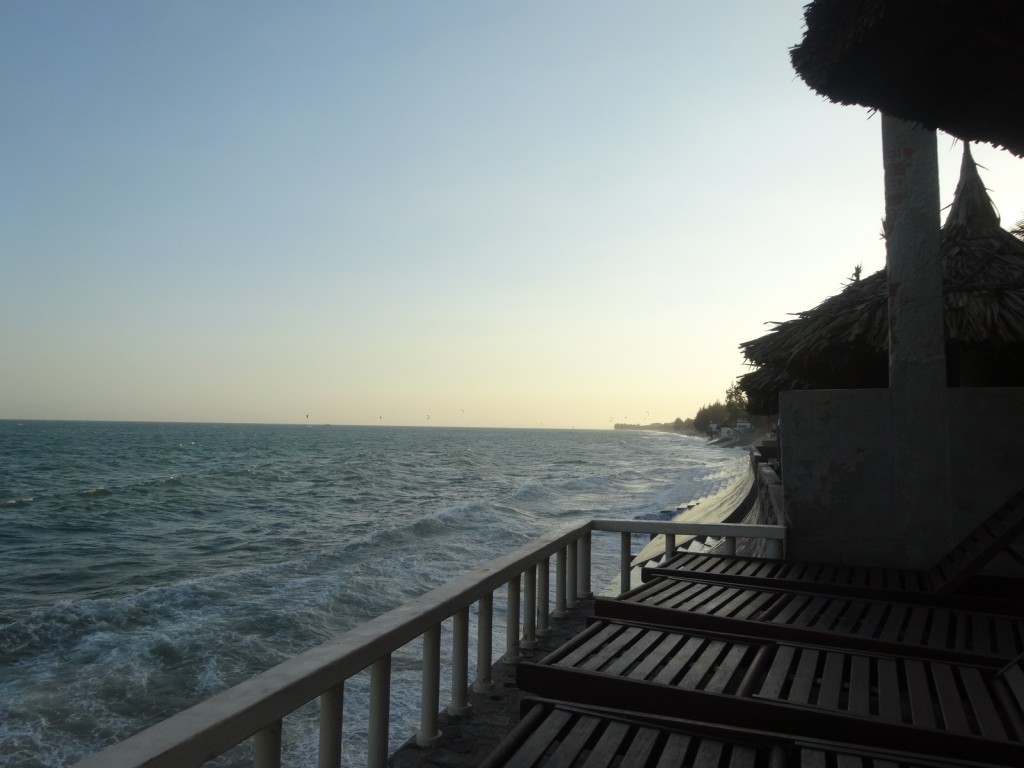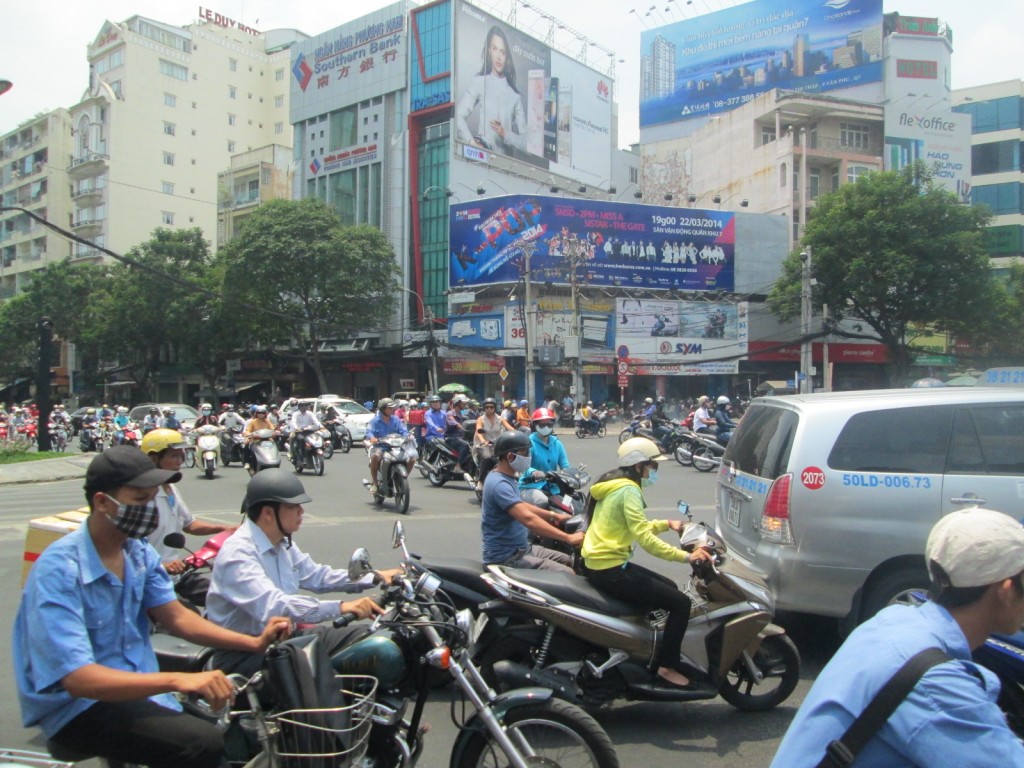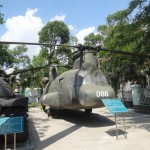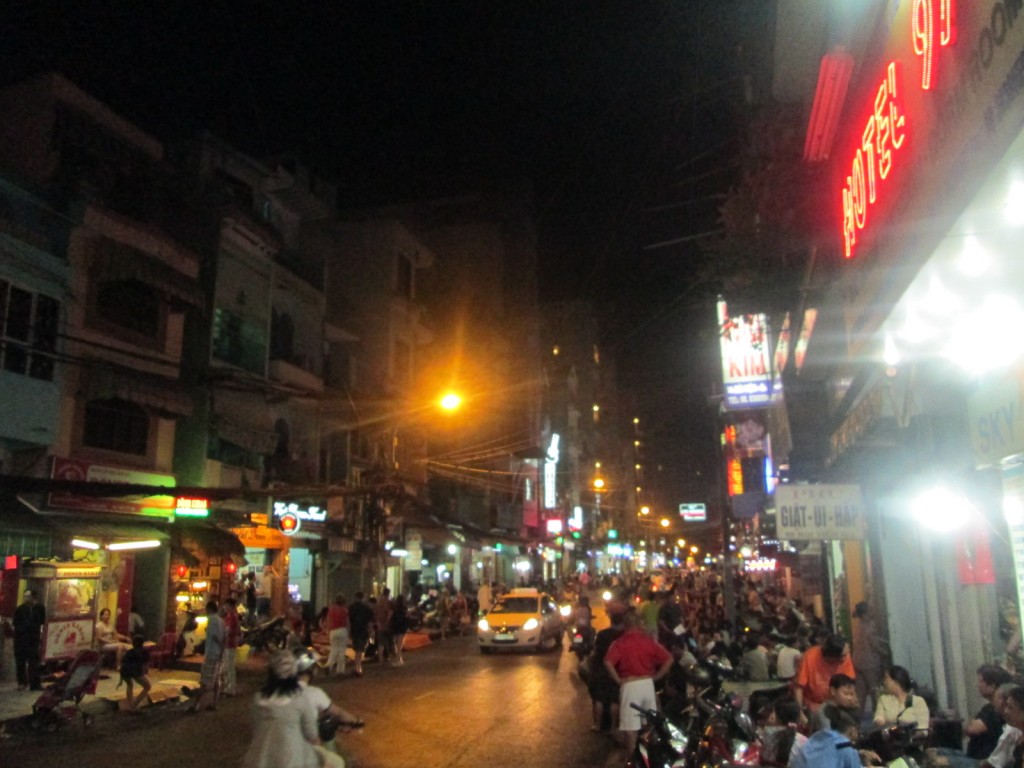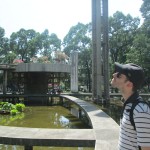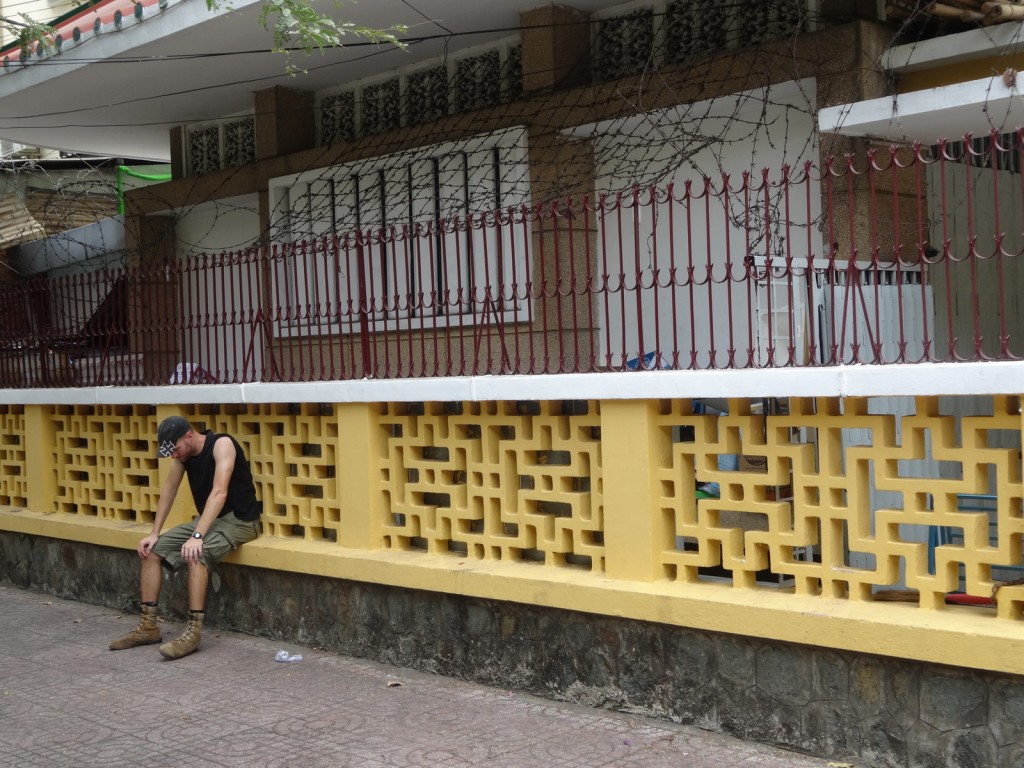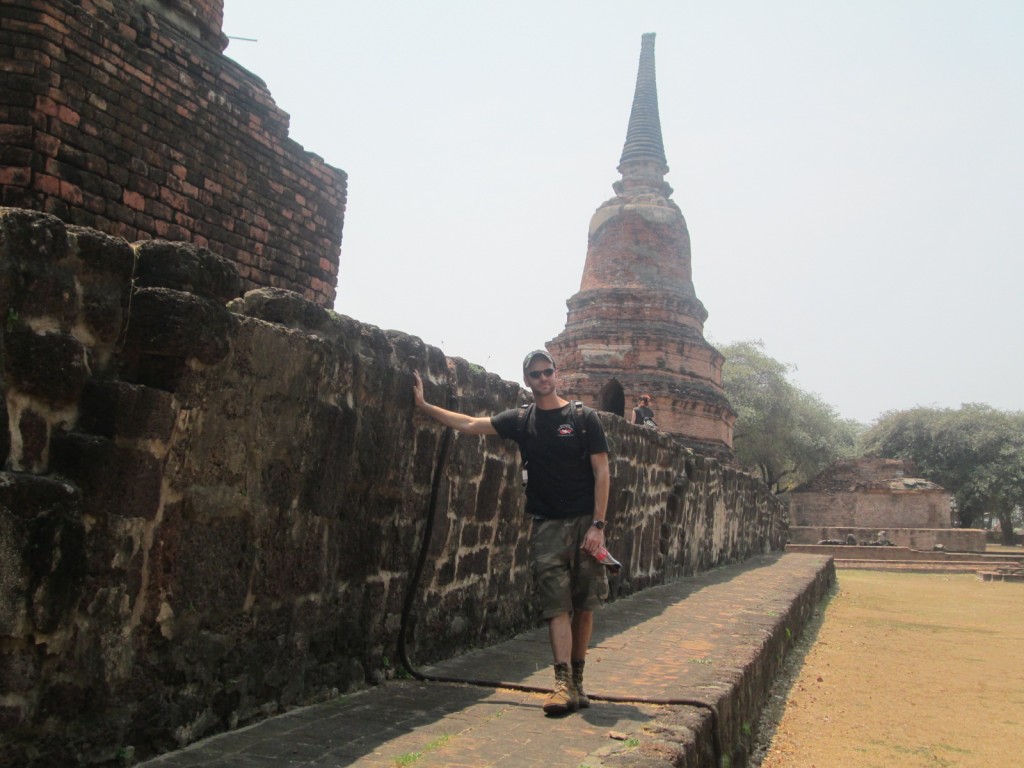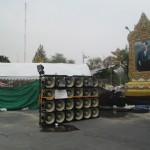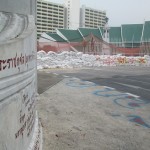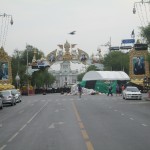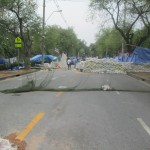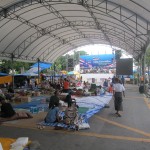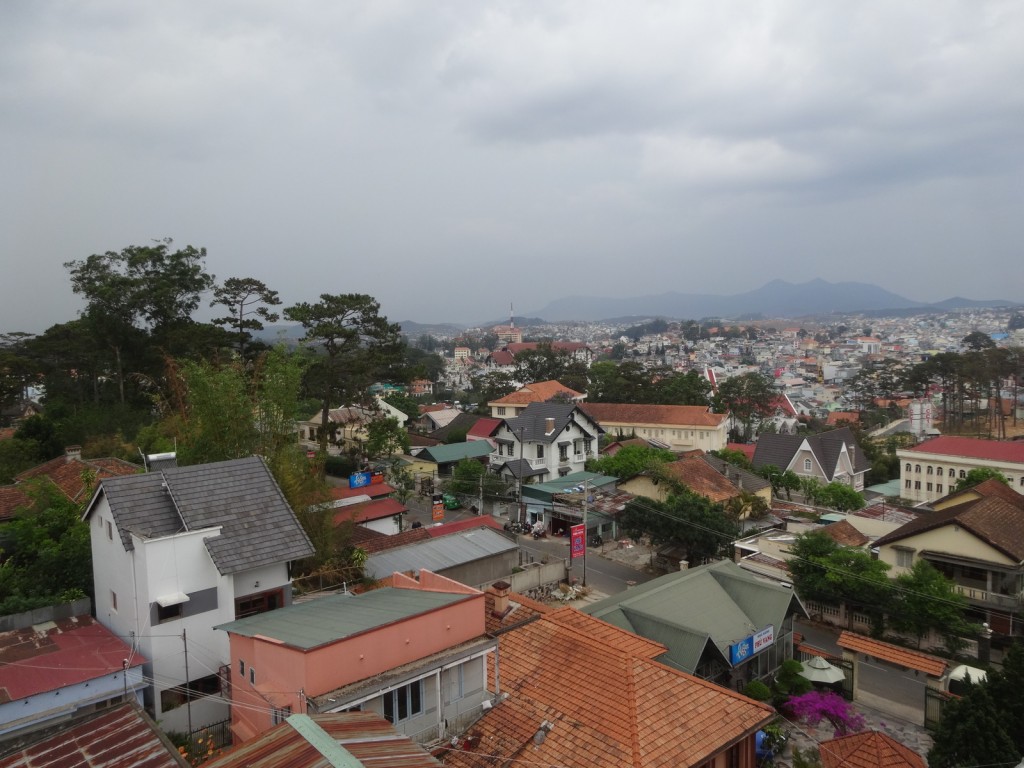
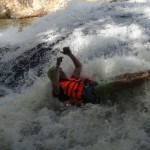
Da Lat se trouve assez haut en altitude. Les journées sont confortables et les nuits fraîches. Son climat est généralement tempéré, ce qui en a fait le potager du Vietnam, mais aussi un lieu de villégiature pour ses expatriés occidentaux du début du siècle dernier et son élite d’aujourd’hui. En raison de sa popularité chez les tranches plus riches de la population, Da Lat abonde en villas et parcs. La ville possède donc un charme définitivement européen en plus d’être situé en pleine région montagneuse. Tout autour de Da Lat il y a nombre d’activités à faire, visite de fermes, moto (bien sûr), randonnées et canyoning. Après avoir entendu de bons commentaires sur cette dernière, c’est que que nous avons décidé de faire le lendemain de notre arrivée. Le principe du canyoning est plutôt simple, on descend un canyon ou une vallée en passant par sa rivière. Cela consiste donc en faire du rappel au beau milieu de chutes d’eau, de glissades, de dériver avec le courant ou encore de sauter de falaises. Par chance, nous étions seulement Yves-Étienne et moi avec deux guides, donc pas besoin d’attendre son tour et la possibilité en plus de refaire certains passages plus d’une fois. Nous nous en sommes sortis avec quelques bleus, coupures et bouillons, mais ce fut un très bon moment.
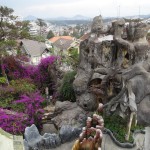
Comme nous étions un très petit groupe, nous sommes revenus à l’hotel en début d’après-midi, ce qui nous a laissé suffisament de temps pour une autre petite visite: la maison folle. Un délire d’une architecte locale qui a peu à envier à Gaudi et que l’on peut parcourir à son aise, pour autant que l’on soit patient, car les Russes adorent les belles poses, les selfies et prendre des photos du même bâtiment sous tous ses angles possibles. Le soir, nous sommes allés manger avec quelques autres voyageurs. Noor, une jeune canadienne de Winnped et d’origine indienne ayant décidé de parcourir le Vietnam à moto seule et Chris, un gallois fin vingtaine. La soirée se termina dans un bar de voyageurs à discuter de diverses choses un peu banales tponctuées des interventions maladroites de Chris. Yves-Étienne et moi en avons eu des meilleures, mais bon, on ne choisit pas toujours ses amis, surtout ceux d’un soir.
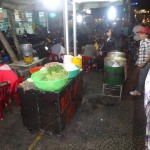
Charmés par Da Lat, très tôt nous avions pris la décision de rester plus d’une journée. Au lever donc et deux sandwhich plus tard (une chose que les Vietnamiens ont conservé de leur passé colonial avec la France, c’est le pain), Yves-Étienne et moi étions sur nos motos en direction des Chutes de l’Éléphant. En bon élève, mon ami est vite devenu confortable sur sa machine et bien que je n’allais pas très vite, il n’avait aucune difficultée à me suivre sur les routes tortueuses des envisons de Da Lat. Une pluie torrentielle a coupé court à notre expédition et nous a contraint à passer une bonne heure sous un abri de fortune en bordure de route. Une fois reparti, nous avons frappé des travaux dont nous n’avons en fait jamais vu la fin, car après quelques kilomètres, il nous est venu à l’esprit que nous n’avions par pris le bon chemin et avons dû retourner sur nos pas. N’ayant plus aucune idée d’où pouvaient se trouver les chutes, nous avons pris la gauche plutôt que la droite à un embranchement et encore il nous a fallu nous arrêter dans un petit village, car le temps tournait à la pluie et la faim se faisait sentir. Nous avons donc dégusté notre bol de pho au son de l’averse sur toit de métal et lorsque nous étions prêt à repartir, il était trop tard pour pousser l’exploration plus loin. Yves-Étienne avait déjà fait l’expérience de pluie, de chaussée mouillée, de travaux alors la moto de nuit, ce devait être pour une autre fois.
L’épreuve n’était pas conclue pour autant. En arrivant à Da Lat, nous nous sommes perdus un moment en pleine heure de pointe et la conduite en traffic vietnamien, ce n’est pas pour amateurs. Un flot incessant de scooters sans vraiment de règles et de signalisation routière si ce n’est qu’autant que possible il faut se tenir à droite. Comme piéton, on s’y fait vite. La priorité de circulation au Vietnam va en fonction de la taille du véhicule et jamais il n’y aura d’ouvertures pour traverser une rue majeure. Il faut simplement se lancer dans la circulation et marcher d’un pas lent mais sûr, sans hésitation ni mouvements brusques. Comme un fluide, les motos nous passent des deux côtés sans oublier bien sûr de nous arroser de coups de klaxon. La surutilisation du klaxon est opressante, mais il sert dans les fait à annoncer sa présence plutôt que de signaler une faute. Dans la circulation, c’est différent. Il faut être constamment aux aguets, car ça coupe, ça double et ça s’arrête sans avertir et dans une voie de voiture, il rentre parfois jusqu’à quatre motos de large. Bref, c’est le bordel et le chaos. Nous voulions éviter ce genre de situation le plus possible pour le baptême d’Yves-Étienne, mais l’on s’est ramassé carrément dedans. Il y a eu quelques frousses, une légère collision avec un muret en raison d’un coup d’accélérateur un peu maladroit, mais au final tout s’est bien passé. D’emblée j’avais dit à Yves-Étienne que s’il survivait au travers de l’épreuve du traffic urbain Vietnamien, il aura vécu le pire à moto.
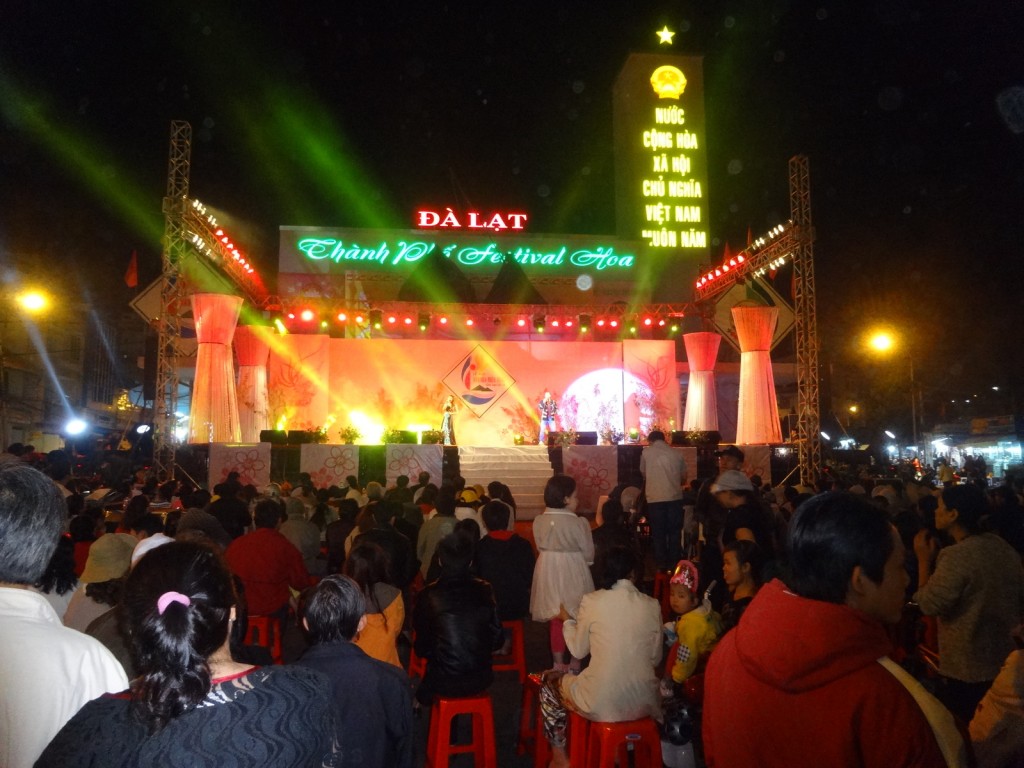
Pour se récompenser, nous avons dînés à un resto Coréen qui bien que cher, fut satisfaisant et ensuite, après avoir regardé pendant un moment un spectacle de célébration de je ne sais quelles festivités, nous sommes retournés au bar du soir précédent où nous trouvèrent Noor assise seule au comptoir. La discussion se fit plus entre mon ami et elle, car son ton de voix était si faible qu’un mêtre plus loin, il m’était inaudible, particulièrement dans un bar où le niveau de bruit ambiant est déjà élevé. Yves-Étienne éprouvé par sa journée, nous sommes vite retournés à l’auberge où lui s’est couché et moi me suis attablé à mon ordinateur pour envoyer un document en lien avec mon application pour l’école de médecine. Noor arriva plus tard et je lui offrit un verre de whisky qu’elle accepta avec plaisir, mais sans cacher un peu de dégoût. C’est selon ses dire son alcool préféré, mais seulement mélangé et là, faute de Coke ou de Pepsi, il allait falloir le boire légèrement dilué avec de l’eau. Tout de suite, elle m’intérogea sur mon opinion de Chris, l’anglais d’hier, qu’elle avait trouvé plutôt pathétique. Ma réponse fut que je partageait son avis par rapport à sa personne, mais que contrairement à elle, j’avais apprécié faire sa connaissance en dépit de l’effort que cela m’a demandé, car après l’avoir cerné, j’avait vite dévoloppé un immense respect pour lui.
De ce respect pour ceux qui font preuve d’un courage hors de l’ordinaire. Chris était l’archétype du timide; une personne handicapée par sa gêne et par sa peur de l’inconnu, incapable de sortir de sa zone de confort. Pourtant, récemment et par force de questionnement, il avait décidé de changer drastiquement son approche par rapport à la vie et était arrivé à l’évidence que c’était maintenant où jamais pour le faire. Même avant d’avoir quitté son emploi et mis ses affaires personnelles en ordre, il avait acheté un allé simple vers la Thailande. De la manière dont il racontait son voyage, on eut cru un récit des grands aventuriers de jadis relatant la première prise de contact entre eux et une communauté d’indigènes. La Thaïlande étant loin d’avoir été un défi pour moi, j’ai quand même pu m’imaginer le genre de fébrilité dans laquelle Chris se trouvait lorsqu’il y a mis les pieds.
Nous avions déjà prolongé notre séjour à Dalat d’une journée alors il était temps que nous partions ver Hoi An, une agglomération de taille moyenne au milieu du Vietnam dont le centre-ville entier est inscrit au patrimoine mondial de l’UNESCO. Pour s’y rendre, il fallait passer par Nah Trang, ville autrefois célèbre pour ses plages, mais aujourd’hui complètement changée par ce type de tourisme que nous essayons d’éviter autant que possible. Le trajet d’autobus fut rendu hautement pénible par un équipage tellement irrespectueux que plus tard j’allais prendre la peine d’envoyer un message à l’auberge pour leur recommander de faire en sorte que la situation ne re reproduise plus, sans quoi leur réputation allait en pâtir. Certes, le Vietnam est un pays en voie de développement et d’exiger le même niveau de service qu’au Canada ferait de moi l’un de ces touristes (souvent Français) dit “chiants”, mais peu importe la culture et le niveau de modernité, il est facile de savoir quand quelqu’un se fout consciemment des autres. L’autobus en question poursuivait son chemin jusqu’à Hoi An, mais Yves-Étienne et moi ainsi que d’autres clients avons décidé avec raison de ne pas donner un sous de plus à cette compagnie et sommes débarqués à Nah Trang pour trouver une autre manière de faire le reste du chemin. Fatigué des longs trajets en autobus, de ce klaxonnage compulsif, des doublements suicidaires et plus généralement de la jungle routière Vietnamienne, nous nous sommes dirigés vers la station de train en vue d’obtenir un place couchette. Sans succès, il ne restait que des sièges en lattes de bois et pour douzes heures, non merci. La gare routière n’étant pas très loin, nous y avons marché et par chance obtenu in-extremis deux places dans un autobus inter-ville. Plutôt confortables, les cars voyageurs locaux sont organisés en trois rangées de lits sur deux étages de haut si bien que si l’on est de stature Vietnamienne et immunisé au son du klaxon, on peut y dormir une bonne nuit. Yves-Étienne ayant passé une nuit blanche la veille en raison d’un système digestif encore en train de s’adapter à la nourriture locale, il n’a pas eu de difficulté à s’endormir, mais pour ma part, je n’ai pu que somnoler par courtes intervalles.
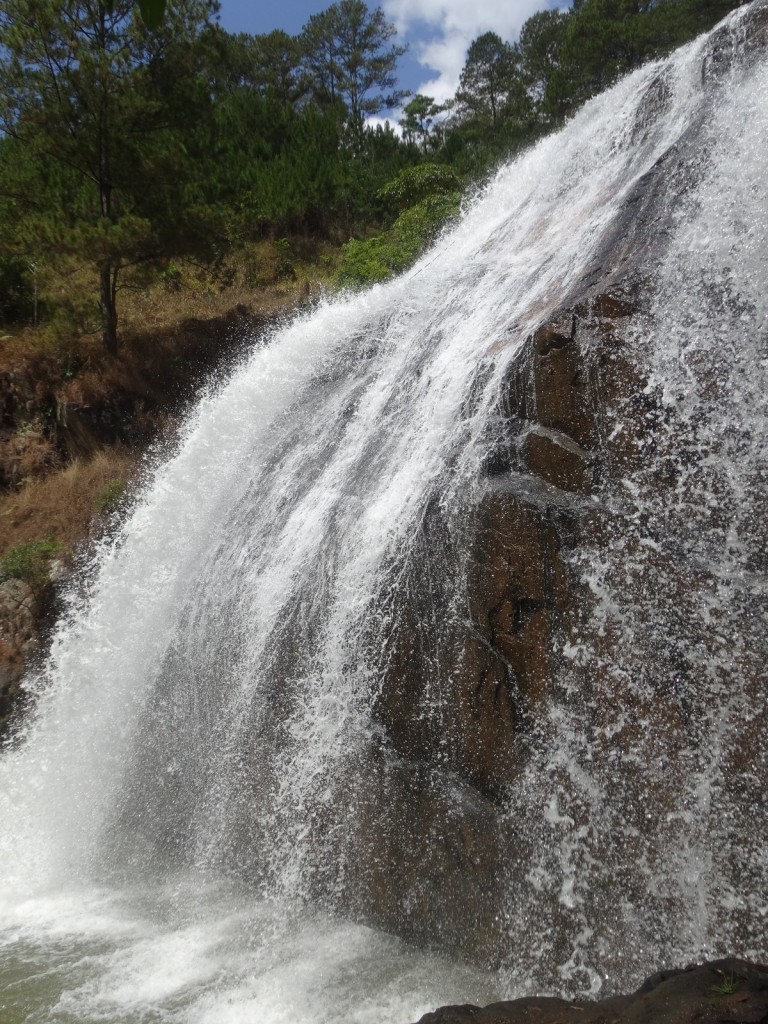
Photos: Yves-Étienne Landry
